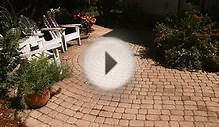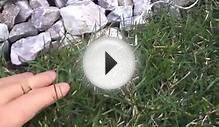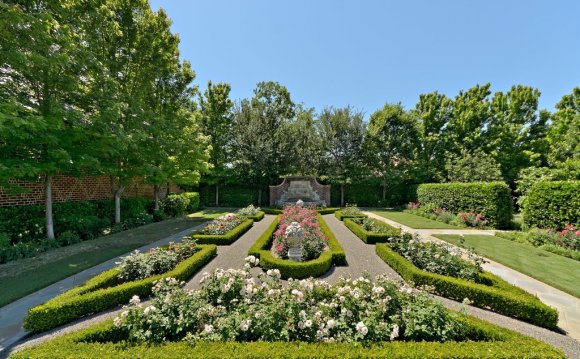
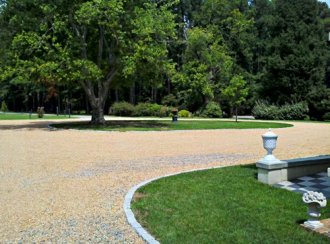
- Mid Atlantic Enterprise Inc in Williamsburg, VA
- European Gardens in York, SC
- Elaine M. Johnson Landscape Design in Centerville, MA
- Charles C Hugo Landscape Design in South Berwick, ME
At first glance, gravel driveways appear quite simple - grade the ground flat, spread some gravel and start using it. Well, it turns out there is more than meets the eye. Adam Heath, Design Director for Mid Atlantic Enterprise, a leading hardscape specialist in Eastern Virginia, recently shared these eye opening tips on designing, installing and maintaining gravel driveways:
Tip #1 - Spend money up front for proper installationMany homeowners think of gravel as being an inexpensive driveway material. However, Heath explains that affordable gravel drives are often not installed properly. “Forgoing a compacted base or opting for flimsy plastic or wooden edging will eventually lead to maintenance problems and dissatisfaction, " he says, "you know, eveything everyone hates about pea gravel driveways."
Heath explains the proper installation method of a gravel driveway as follows:
- Excavate down 12”
- Compact the subgrade
- Lay woven geotextile fabric so that it covers the bottom and sides of the excavated area
- Add 8” of base material, compacting in 3” lifts (well graded crusher run)
- Install edging (steel or anodized aluminum)
- Spread a 3” layer of pea gravel
 When using this installation procedure, Heath says you can expect to pay anywhere from to per square foot. “A quality pea gravel driveway will cost less than pavers, but more than asphalt or concrete, ” he points out. Heath sees many improperly installed gravel driveways in his area of Virginia that have ruts, drainage problems and gravel that escapes its boundaries. “I’d recommend switching to exposed aggregate concrete to reduce costs rather than skimping on the installation, ” he concludes.
When using this installation procedure, Heath says you can expect to pay anywhere from to per square foot. “A quality pea gravel driveway will cost less than pavers, but more than asphalt or concrete, ” he points out. Heath sees many improperly installed gravel driveways in his area of Virginia that have ruts, drainage problems and gravel that escapes its boundaries. “I’d recommend switching to exposed aggregate concrete to reduce costs rather than skimping on the installation, ” he concludes.
Tip #2 - Use Belgian block edging to dress up a gravel driveMost homeowners don’t put enough thought into the edging material for their driveway. Not only does it contain the gravel but it also can serve as a decorative border. Heath likes to use Belgian block along the edges of the gravel driveways he designs. “When edging a driveway, the jumbo blocks that measure 11” x 8” x 4” are best, ” he says. This is because the block can be set lengthwise atop the compacted base material and the three inches of pea gravel added which will leave one inch of block rising above the surface of the finished driveway. "If you’re interested in going the extra mile, you could lay the block on its face in a running bond or offset running bond pattern to form a decorative apron, " Heath adds.
Tip #3 - Be prepared for annual maintenanceIn reality, no driveway material is maintenance free - concrete will need occasional cleaning and sealing, pavers require weeding and joint filling (if no polymeric sand is used), asphalt must be sealed and sometimes tar has to be reapplied. A gravel driveway comes with its own maintenance concerns, which according to Heath can be kept to a minimum with proper installation techniques (see Tip #1 above). “We find that yearly re-grading helps keep the driveway looking its best for years, ” he says. For driveways that are installed without woven geotextile fabric or 8” of compacted base material maintenance requirements increase.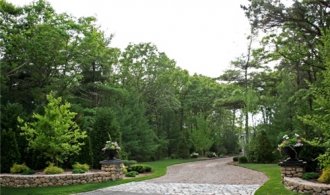 Without these two elements the gravel will sink into the ground easily and is more likely to be washed out of place by rainwater or runoff from irrigation.
Without these two elements the gravel will sink into the ground easily and is more likely to be washed out of place by rainwater or runoff from irrigation.
Tip #4 - Use your driveway to collect waterYour driveway covers a lot of square footage; in fact it is probably the largest paved surface on your property. For this reason, Heath suggests using it for water collection. “Gravel isn't permeable by itself. You must design a driveway in a way that allows water to pass through into an underground reservoir. Generally speaking you have a layer of #2 or #3 gravel, then #57, #8 as your setting bed, and then your pea gravel. Depending on the water collection needs the depth of each layer will vary, ” he explains. The water collected from your driveway can then be used to supplement landscape irrigation needs. Products Heath mentioned using for this type of application are Gravelpave2 and Rainstore3 from Invisible Structures, Inc.
Tip #5 - Avoid ruts by making the surface layer of pea gravel shallowMany people avoid gravel driveways because they don’t like the unkempt look of tire ruts. “When the gravel is too deep it moves around while cars drive over it, ” says Heath. “We never spread more than a three inch layer of pea gravel.” Keeping the top layer of gravel shallow will mitigate general shifting and lessen the need to regrade.
Using the Gravelpave2 system from Invisible Structures (as mentioned in Tip #4), can also help keep gravel in place. In this case, only one inch of gravel should be spread. The grid below the gravel holds it in place and prevents ruts. However, Heath points out that with this system re-grading may be needed more frequently to keep the grid-work from showing through.
Tip #6 - Use local stone for a color that will look naturalMost regions have their own distinct color of gravel that is readily available. “Here in Williamsburg darker browns and beiges are common, if you move south to North Carolina the colors get lighter, ” says Heath. If you want your driveway to look natural in its wider context, select a gravel color that comes from a local source. However, if you have your heart set on a certain color, anything can be obtained for an added price.
YOU MIGHT ALSO LIKE

